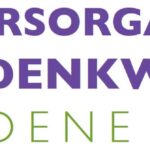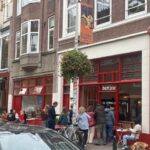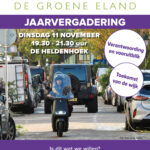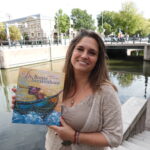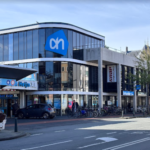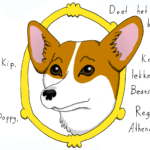Wat maakt het Zeeheldenkwartier aantrekkelijk voor jonge mensen?
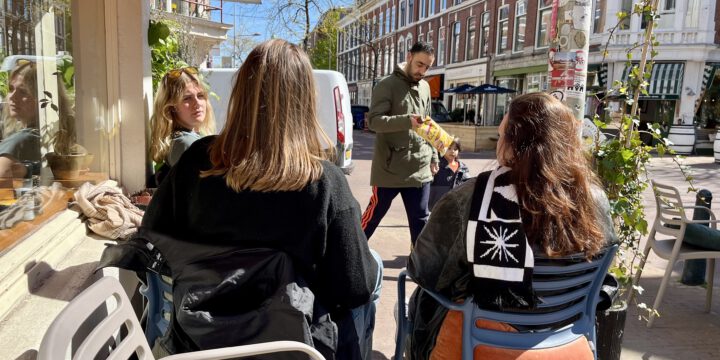
TEKST EN FOTO WYBE VAN DE KUINDER
ENGLISH BELOW
Het is onvoorstelbaar dat pas zo’n slordige honderdvijftig jaar geleden werd begonnen met de bouw van het Zeeheldenkwartier. Kleinschalig en rommelig. Want kleine grondbeleggers kochten hier en daar een weiland, dienden een stratenplan in en begonnen te bouwen. Vijftig jaar later was het gebied van de Zeestraat tot aan de Waldeck Pyrmontkade volgebouwd en werden er ten behoeve van de doorbraak van de Vondelstraat alweer een groot aantal huizen gesloopt.
Vanaf het ontstaan is het een bijzonder bedrijvige buurt geweest. Er was een groentemarkt en aan het eind van de Crispijnstraat werd een, ooit nog door Vincent van Gogh vereeuwigde, houtzaagmolen gebouwd. De Piet Heinstraat en de Witte de Withstraat waren de winkelstraten in het gebied. De weilanden tussen de Elandstraat en de Laan van Meerdervoort werden in rap tempo volgepropt met huizen en bedrijven voor de middenstand. De hofjes die nu voor grof geld van de hand worden gedaan en waarvan het merendeel is verdwenen, werden in die tijd gebouwd voor de arbeidersklasse. Grofweg stonden de herenhuizen aan de Toussaintkade, Anna Paulownastraat en aan de winkelstraten Piet Heinstraat, Zoutmanstraat en Prins Hendrikstraat. De grote bedrijven en verzekeringskantoren vestigden zich tussen de Zeestraat en de Anna Paulownastraat.
De wijk kwam relatief ongeschonden door de oorlog, maar na de oorlog nam de bedrijvigheid af. Het werd een populaire plek voor studenten. De ruime panden in de wijk werden opgedeeld en verhuurd aan kamerbewoners. De laatste winkeltjes kwamen leeg te staan na de komst van de Konmar, de eerste wijksuper. Tussen 1988 en 1994 werden veel huizen gesloopt ten behoeve van de stadsvernieuwing. In de versteende wijk werden plekjes groen gecreëerd. De Piet Heinstraat, Prins Hendrikstraat en Zoutmanstraat werden in ere hersteld en langzaam krabbelde de buurt weer op. In de Piet Heinstraat opende de eerste koffiebar tegelijk met de eerste koffieshops haar deuren. De Prins Hendrikstraat volgde al snel. Er werden tafeltjes buiten neergezet. Een eerste terrasje werd geboren. Kamerverhuur veranderde in appartementenverhuur en een deel van de wijk werd bevolkt door expats.
Nu, in 2024, is het stadsdeel totaal veranderd. De tafeltjes op het trottoir zijn uitgegroeid tot heuse terrassen. Een van de aspecten waardoor het Zeeheldenkwartier zo aantrekkelijk is geworden. Jongeren willen er graag wonen en de mensen die er wonen willen niet meer weg. Koophuizen en huurhuizen zijn er peperduur.
Volgens een artikel in het AD van 9 april jl., zijn de veel bezochte terrassen van Den Haag de duurste van heel Nederland. Daarmee wordt de binnenstad van Den Haag bedoeld, maar de prijzen die ze daar berekenen zijn gelijk aan die in het Zeeheldenkwartier. De terrassen zitten vol met doorgaans jonge mensen en de voertaal is vaak Engels.
De meeste jongeren die de terrassen bezoeken komen ‘vanbuiten’. Ze vinden het hier hip, leuk, gezellig, hier gebeurt ‘het’ en ‘iedereen’ is er. ‘Het Zeehelden’ zoals de wijk vaak wordt genoemd, voorziet in alles wat de ‘Z generatie’ wil. Diversiteit, leuke winkeltjes, lunchrestaurants met een ruime keuze aan koffietjes, taartjes en lunches. Twee uitstekende ijssalons. Een enkele uitschieter naar werkelijk exclusieve koffie. En een grote hoeveelheid restaurants. Als je hier woont heb je dat alles binnen bereik. De wijk is omgeven door kades met leuke terrassen. De Toussaintkade – met aan de overkant de Paleistuin – de Veenkade en de Kortenaerkade. Er zijn nog enkele geheimzinnige hofjes, statige gevels en de wijk herbergt een heus Vredespaleis. En als je daar niet genoeg aan hebt, is er een klein theater en op loop- of fietsafstand vind je even verderop de binnenstad met z’n theaters, bioscopen en musea. Op regenachtige dagen zit je met tramlijnen 1, 3 of 17 of bus 24 in een wip in het Centrum of op een van de twee treinstations. Ook het Kunstmuseum en het strand zijn vlakbij. En dan noemen we nog niet de drukbezochte themamarkten zoals het aspergefeest, het mosselfeest, de wekelijkse biomarkt op het Prins Hendrikplein, de kunstenaars, schrijvers en muzikanten die de wijk bevolken en last but not least, het Zeeheldenfestival. Een gratis muziekfestival, dat dit jaar aan zijn tweeënveertigste editie begint. Dat maakt het Zeeheldenkwartier wat het is. Een rommelige, gezellige wijk waar altijd wel wat gebeurt.
What makes the Zeeheldenkwartier attractive to young people?
TRANSLATION: CINDY HOCK
It is unimaginable that only some hundred and fifty years ago, the building of the Zeeheldenkwartier started. Small-scale and messy. For small land investors bought a meadow here and there, submitted a street plan, and started building. Fifty years later, the area from the Zeestraat to the Waldeck Pyrmontkade had been fully built and a large number of houses had already been demolished for the sake of the Vondelstraat breakthrough. (See Street Stories on page 8/9 of this issue).
From its inception, it has been a particularly bustling neighbourhood. There was a vegetable market and at the end of the Crispijnstraat a sawmill, once immortalised by Vincent van Gogh, was built. The Piet Heinstraat and the Witte de Witstraat were the shopping streets in the area. The meadows between the Elandstraat and the Laan van Meerdervoort were rapidly filled with houses and businesses for the middle class. The courtyards now being sold off for big money, most of which have disappeared, were built for the working class in those days. Roughly speaking, the mansions were on the Toussaintkade, the Anna Paulownastraat, and on the shopping streets the Piet Heinstraat, the Zoutmanstraat, and the Prins Hendrikstraat. The large companies and insurance offices settled between the Zeestraat and the Anna Paulownastraat.
The neighbourhood came through the war relatively unscathed, but after the war, the activity declined. It became a popular place for students. The spacious properties in the neighbourhood were subdivided and rented out to roomers. The last shops became vacant after the arrival of the Konmar, the first neighbourhood supermarket. Between 1988 and 1994, many houses were demolished for the urban renewal. Patches of green were created in the urbanised neighbourhood. The Piet Heinstraat, the Prins Hendrikstraat, and the Zoutmanstraat were reinstated and slowly the neighbourhood recovered. In the Piet Heinstraat, the first coffee bar opened its doors at the same time as the first coffee shops. The Prins Hendrikstraat soon followed. Tables were set up outside. A first terrace was born. Room rental changed into flat rental and part of the neighbourhood became populated by expats.
Now, in 2024, the neighbourhood has totally changed. Tables on the pavement have grown into veritable terraces. One of the aspects that have made the Zeeheldenkwartier so attractive. Young people want to live here and the people who live here do not want to leave. Houses to buy and let are extremely expensive.
According to an article in the AD of 9 April last, the much visited terraces of The Hague are the most expensive in the whole of the Netherlands. This refers to the city centre of The Hague, but the prices they charge there are similar to those in the Zeeheldenkwartier. The terraces are full of mostly young people and the language of communication is often English.
Most young people who visit the terraces come ‘from outside’. They find it hip, fun, cosy, this is where ‘it’ happens and where ‘everyone’ is. ‘Het Zeehelden’ as the neighbourhood is often called, provides everything the ‘Z generation’ wants. Diversity, nice shops, lunch restaurants with a wide choice of coffees, cakes and lunches. Two excellent ice cream parlours. An occasional outlier to really exclusive coffee. And a vast array of restaurants. If you live here, you have all that within reach. The neighbourhood is surrounded by quays with nice terraces. The Toussaintkade – with the Palace Garden across the street – the Veenkade and the Cortenaerkade. There are still some mysterious courtyards, stately façades, and the neighbourhood houses a genuine Peace Palace. And if that is not enough for you, there is a small theatre and at walking or cycling distance you will find the city centre with its theatres, cinemas, and museums a little further away. On rainy days, tram lines 1, 3 or 17 or bus 24 get you to the city centre or one of the two train stations in a jiffy. The Art Museum and the beach are also nearby. Not to mention the well-attended theme markets like the asparagus festival, the mussel festival, the weekly organic market on the Prins Hendrikplein, the artists, writers, and musicians that populate the neighbourhood, and last but not least, the Zeeheldenfestival. A free music festival, which is entering its forty-second edition this year. That is what makes the Zeeheldenkwartier what it is. A messy, cosy neighbourhood where there is always something going on.

